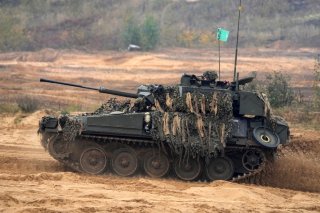Missile Defense and More: How NATO Will Deter Russian Aggression
The Pentagon is taking specific steps to strengthen missile defense networking with NATO allies throughout Europe and increase multinational collaboration in support of Ukraine.
The Pentagon is taking specific steps to strengthen missile defense networking with NATO allies throughout Europe and increase multinational collaboration in support of Ukraine.
U.S. Deputy Secretary of Defense Kathleen Hicks and Germany’s State Secretary for the Federal Ministry of Defence Benedikt Zimmer discussed this issue on a recent video call, according to a statement released by the Pentagon.
The discussion focused on a range of issues, including the security of the supply chain and extending appreciation to Germany for its collaborative efforts with Denmark and Norway to send sixteen Howitzers from Slovakia to Ukraine, according to the Pentagon.
Much of the discussion was centered upon a massive Germany-led effort called European Sky Shield Initiative, a collaborative move involving fourteen NATO countries and Finland to strengthen a network of missile defense nodes throughout the continent. Though many of the specifics have yet to be determined, NATO leaders have been clear that the initiative will involve a large-scale strengthening of European defenses.
There are several key variables to consider in terms of both the strategy and the threat. Networking technologies, enabled by gateway interface systems, common standards, and multinational connectivity across multiple transport layer technologies now make it more possible to connect otherwise disparate technologies to one another to support secure data transmission, information exchange, and interoperability. Satellite signals, for instance, can now more easily share data with radio frequency (RF) signatures, various datalinks and wireless cyber technologies, and countries with different technological architectures for their networking systems can now more successfully exchange data with one another. This creates a tactical scenario wherein missile defense nodes throughout Europe can more quickly and efficiently share threat-tracking information, warning alerts, and even targeting specifics, should an intercept be necessary. This kind of multinational synergy can give commanders on the ground much more time and flexibility with which to determine an optimal response, defensive maneuver, or counterattack
The other critical dimension to this is the evolving threat situation. Russia violated the Intermediate-Range Nuclear Forces (INF) Treaty several years ago, a development which placed much of the European continent at great risk of being hit by mid-range Russian ballistic missiles able to travel 600-to-900 miles.
Kris Osborn is the defense editor for the National Interest. Osborn previously served at the Pentagon as a Highly Qualified Expert with the Office of the Assistant Secretary of the Army—Acquisition, Logistics & Technology. Osborn has also worked as an anchor and on-air military specialist at national TV networks. He has appeared as a guest military expert on Fox News, MSNBC, The Military Channel, and The History Channel. He also has a Master’s Degree in Comparative Literature from Columbia University.
Image: Reuters.

